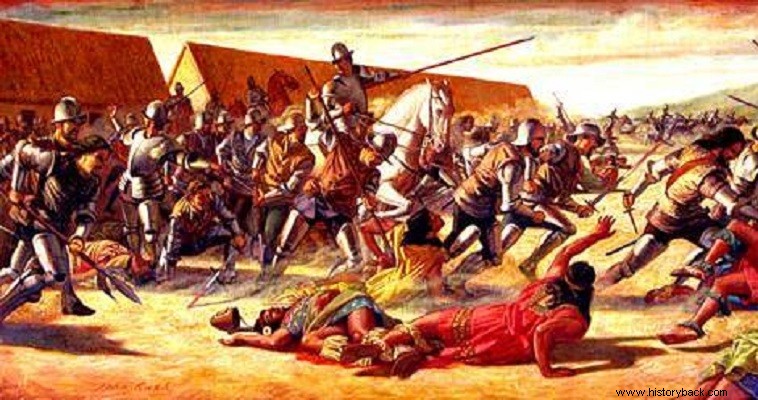
From the middle of the 16th c. A.D. groups of European adventurers began to arrive on the American continent in search of the famous land of Eldorado, the land where gold was everywhere and you only had to reach out to get it. According to legend, there was an Indian city near present-day Bogota, Bolivia, where a very rich king lived.
There was so much gold that during festivities the king would cover his entire body with gold dust. It would then fall into Lake Gutavita to be washed off. His subjects then showered him with precious stones and gold jewelry. Very quickly the legend of Eldorado traveled to the ends of the earth pushing many adventurers to the discovery of the mythical golden state.
Among the most famous Spanish explorers was Francisco Pitaro , the conqueror of the Inca empire, the first white man to cross the Andes. At least this was believed until today.
But the first non-native to cross the Andes and enter the land of the Incas was the Cretan Peter from Khandaka – Pedro de Candia in Spanish. And not only that. The daring Pedro de Cadia was the first European to set foot in Peru, and the first governor of the historic city of Cusco.
Petros was born in Venetian-occupied Crete in 1494. According to some sources, his family came from Venetian settlers. He was a Soldier, (Stradioti) and traveled to Italy, where he took part in the Italian Wars, fighting with the army of the Habsburg Emperor Charles V. He then went to Spain and from there found himself in the New World, seeking riches and adventure.
Only 30 years old, in 1524, Petros found himself in the service of Francis Pitharos. The latter participated in the campaign of Balboa, who in search of the mythical golden city of the West Indies managed to reach the shores of the Pacific Ocean first.
Franciscos Pitharos, captivated by the legend of Eldorado of the country with untold wealth, decided to continue his campaign. He had been informed by old maps that somewhere on the shores of the Pacific lay a new country, which he identified in his imagination with Eldorado, the city of gold. So he formed his own armed group and set out to discover the mythical city.
He was accompanied on the journey by Petros, whom Pitharos particularly trusted. Pitharus sent Peter, who was in charge, to reconnoitre. Petros had with him an arquebus. He approached the chieftain and the natives who arrived in threatening moods and fired into the air to frighten them. The locals, instead of putting it to rest, thought that Tlaloc, the "God of Thunder", had descended to earth and began to glorify him.
Taking advantage of the civil war that had broken out among the natives, they captured the Inca king, Atahualpa . The followers of the rightful heir to the throne Huska, who had been murdered by his brother Atahualpa, supported the Conquistadors considering them the liberators and punishers of the dynasty. So they went to their service.
Soon the 160 or so Spaniards and one Greek captured the Inca capital, Cusco, without a fight. Wanting to honor the Greek who helped him, Pitharus appointed Petros commander of Cuzco. Living among the locals, the daring Cretan decided to explore the neighboring areas as well.
Deep down he believed that the mythical golden state of Eldorado had not yet been discovered. In search of the golden city he decided to cross the Andes , one of the largest mountain ranges in the world, reaching the edge of the rainforest. But there he faced the hostile behavior of the natives and was forced to return to Cusco.
Peter lived only 18 years in Peru afterhe was finally assassinated by the Spanish nobleman d'Almagro , son of Diego de Almagro, an adventurer from Extremadura, Spain, who had been murdered by Pitharo.
The assassination of Peter caused a conflict between the Conquistadores that ended with the victory of Pitharos. And the latter did not take long to meet his Greek friend, after he was murdered in 1542. Today they are both buried with the rest of the "Thirteen of Glory" near a chapel of the Cathedral of Lima, the new capital of Peru founded by Pitaro in 1535.
